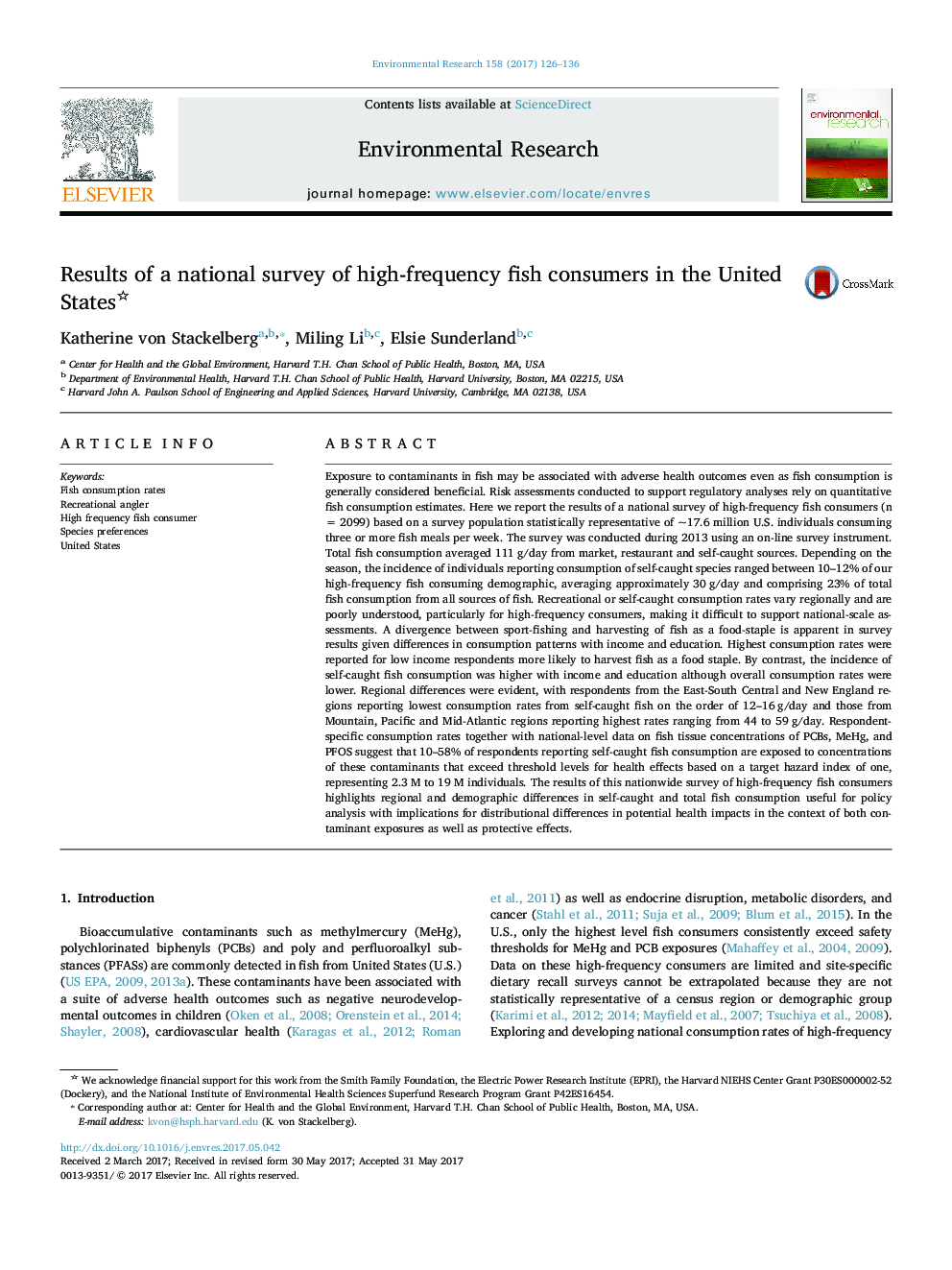| کد مقاله | کد نشریه | سال انتشار | مقاله انگلیسی | نسخه تمام متن |
|---|---|---|---|---|
| 5756351 | 1622545 | 2017 | 11 صفحه PDF | دانلود رایگان |
عنوان انگلیسی مقاله ISI
Results of a national survey of high-frequency fish consumers in the United States
ترجمه فارسی عنوان
نتایج یک بررسی ملی مصرف کنندگان ماهی در فرکانس بالا در ایالات متحده
دانلود مقاله + سفارش ترجمه
دانلود مقاله ISI انگلیسی
رایگان برای ایرانیان
کلمات کلیدی
نرخ مصرف ماهی، ماهیگیر تفریحی فرکانس بالا مصرف ماهی، ترجیحات گونه، ایالات متحده،
موضوعات مرتبط
علوم زیستی و بیوفناوری
علوم محیط زیست
بهداشت، سم شناسی و جهش زایی
چکیده انگلیسی
Exposure to contaminants in fish may be associated with adverse health outcomes even as fish consumption is generally considered beneficial. Risk assessments conducted to support regulatory analyses rely on quantitative fish consumption estimates. Here we report the results of a national survey of high-frequency fish consumers (n = 2099) based on a survey population statistically representative of ~17.6 million U.S. individuals consuming three or more fish meals per week. The survey was conducted during 2013 using an on-line survey instrument. Total fish consumption averaged 111Â g/day from market, restaurant and self-caught sources. Depending on the season, the incidence of individuals reporting consumption of self-caught species ranged between 10-12% of our high-frequency fish consuming demographic, averaging approximately 30Â g/day and comprising 23% of total fish consumption from all sources of fish. Recreational or self-caught consumption rates vary regionally and are poorly understood, particularly for high-frequency consumers, making it difficult to support national-scale assessments. A divergence between sport-fishing and harvesting of fish as a food-staple is apparent in survey results given differences in consumption patterns with income and education. Highest consumption rates were reported for low income respondents more likely to harvest fish as a food staple. By contrast, the incidence of self-caught fish consumption was higher with income and education although overall consumption rates were lower. Regional differences were evident, with respondents from the East-South Central and New England regions reporting lowest consumption rates from self-caught fish on the order of 12-16Â g/day and those from Mountain, Pacific and Mid-Atlantic regions reporting highest rates ranging from 44 to 59Â g/day. Respondent-specific consumption rates together with national-level data on fish tissue concentrations of PCBs, MeHg, and PFOS suggest that 10-58% of respondents reporting self-caught fish consumption are exposed to concentrations of these contaminants that exceed threshold levels for health effects based on a target hazard index of one, representing 2.3Â M to 19Â M individuals. The results of this nationwide survey of high-frequency fish consumers highlights regional and demographic differences in self-caught and total fish consumption useful for policy analysis with implications for distributional differences in potential health impacts in the context of both contaminant exposures as well as protective effects.
ناشر
Database: Elsevier - ScienceDirect (ساینس دایرکت)
Journal: Environmental Research - Volume 158, October 2017, Pages 126-136
Journal: Environmental Research - Volume 158, October 2017, Pages 126-136
نویسندگان
Katherine von Stackelberg, Miling Li, Elsie Sunderland,
